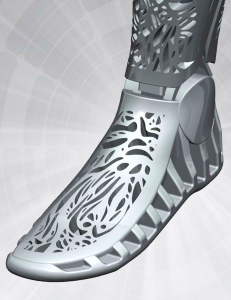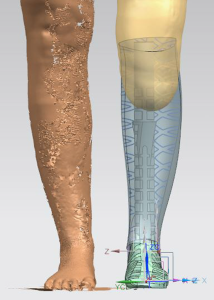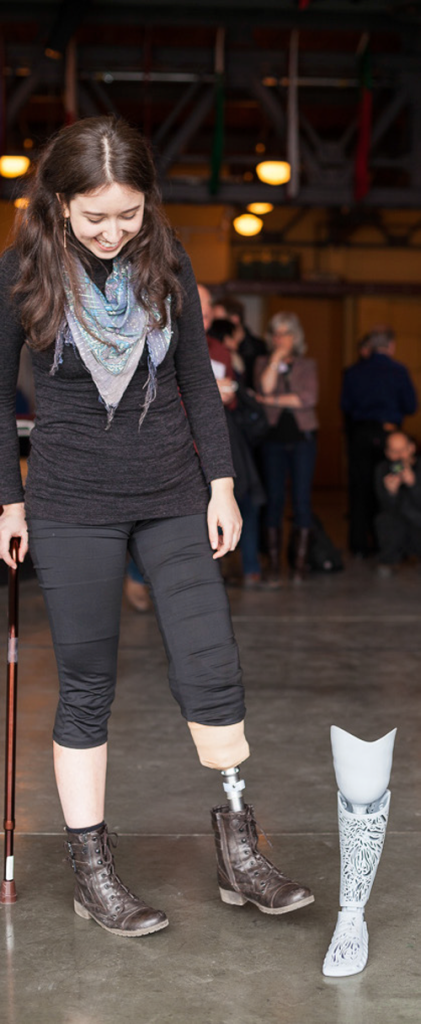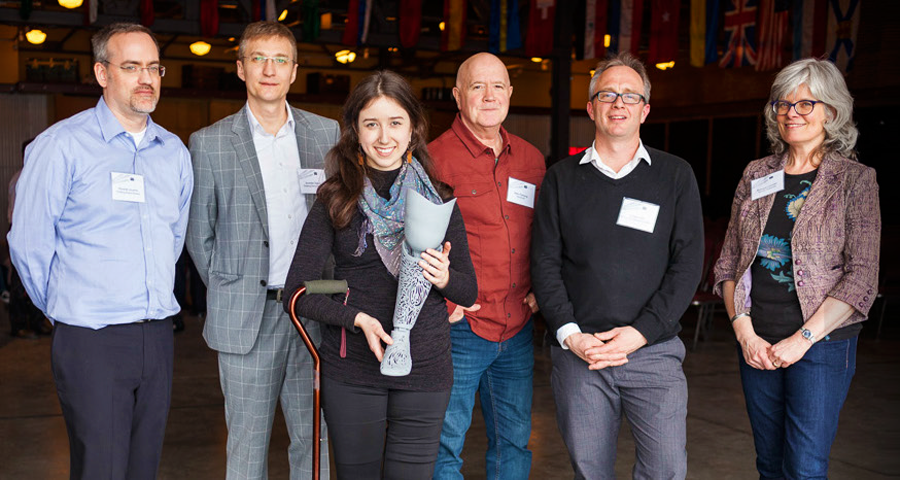Due to the reduced cost of and extreme customization offered by 3D printing, additively manufactured artificial limbs stand to revolutionize the prosthetic industry completely. In April, we covered the story of Natasha Hope-Simpson, a woman who exemplifies the possibilities of this revolution. Today, 3D printing industry leader 3D Systems has elaborated on her story, complete with a compelling video of Natasha’s journey to design her own 3D printed leg, with the help of a big team of very helpful designers and engineers.

In early 2014, an act of serendipity set up a chain of events that would change her life forever. Giving a lecture at NSCAD about the process of creating a prosthetic that balanced function and aesthetics, Natasha was lucky enough to have NSCAD Director Gregor Ash in the audience. Ash was so inspired by the graduate’s ambitious project that he hoped to enable her further. Ash contacted Thinking Robot Studios and enlisted them to help make Natasha’s personally-tailored, customized prosthetic a reality in time for NSCAD’s Maker Symposium, just 15 days away.

Meanwhile, Natasha was working on the aesthetic components of her new limb. Examining femininity and with an eye on patterns, Natasha came across the 3D printed masks of Melissa Ng and fell in love. In turn, Ng came up with a design entirely unique to the project and sent it over to Thinking Robot, who were tasked with matching their functional parts with the 3D printing artist’s work.

The artificial limb is still in the prototype stages, but Ng will be continuing to work with Thinking Robot to complete the finished design. But, even the prototype demonstrates the potential that this technology has for the future of prosthetics. Along with stories of 3D printed hands and fingers, coming from Robohand and E-nable, Natasha’s own experience shows that an artificial limb can not only be tailored to fit a person physically, but that they can be designed to fit the personality of the wearer, transforming it from an element of negative space into a positive piece of one’s own story.
I’ve hardly done the project justice here, so I encourage you to read the case study for more specific details and to watch the video below, aptly titled “A Leg that Fits”. In it, you’ll hear great insights from every person involved as to how amazing this endeavor actually is.




